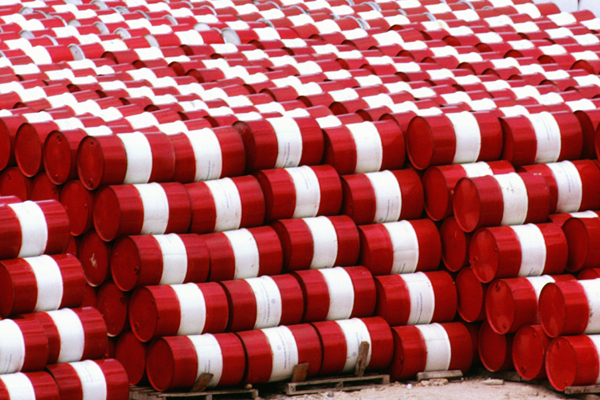
Oil falls again after gains from Saudi-Iran row
DUBAI, January 4, 2016
Oil prices eased on Monday after data showed some of Asia's largest economies are struggling, which offset a boost from a breakdown in diplomatic ties between Saudi Arabia and Iran that some believed could result in supply restrictions.
Saudi Arabia, the world's biggest oil exporter, cut diplomatic ties with Iran on Sunday in response to the storming of its embassy in Tehran. The diplomatic row between the two major oil producers escalated following Riyadh's execution of a prominent Shi'ite cleric on Saturday.
But oil's early price gains fizzled after data showed Chinese factory activity shrank for a 10th straight month, prompting a 7-percent fall on Chinese stock markets and for trading to be suspended.
Manufacturing activity in India, which the International Energy Agency believes will lead growth in oil demand this year, contracted for the first time in two years.
Benchmark Brent crude futures were last down 5 cents on the day at $37.23 a barrel at 0900 GMT, having touched an intraday high of $38.50. US West Texas Intermediate (WTI) futures were down 10 cents at $36.94.
"Iran may decide to take more of a hardline stance against the Saudi-oriented policy of not cutting production. So far, they've been going along with it, but this renewed political vigour may prompt them to change a bit," CMC Markets analyst Jasper Lawler said.
"Really, this is still a bear market and people are just selling the bounce because (the clash) is not going to affect production. Obviously it's just tensions in the region."
Oil prices are still down by two-thirds since mid-2014 on oversupply as producers including the Organization of the Petroleum Exporting Countries (Opec), Russia and the United States pump between 0.5 million and 2 million barrels of oil every day in excess of demand.
The clash between the two Middle Eastern countries comes as Iran, which holds some of the largest proven reserves, hopes to ramp up oil exports following the expected removal of sanctions against it.
"Opec, Russia and the US beat our initial supply expectations, adding to an existing inventory headwind. For 2016 we think of it as the market rebalancing year, but only from 2H (the second half of 2016)," Alliance Bernstein said.
Alliance Bernstein said it expected average Brent prices to fall to $50 in 2016 from $53 per barrel last year but to recover to $70 a barrel in 2017 and to $80 in 2018.
Iran plans to raise output by half a million to 1 million barrels per day (bpd) post lifting of sanctions, although Iranian officials said they did not plan to flood the market with its crude if there was no demand for it.
Iran's oil exports have fallen to around 1 million bpd, down from a peak pre-sanctions peak of almost 3 million bpd in 2011.
In Russia oil output hit a post-Soviet high in 2015, averaging 10.73 million bpd.
Dubai crude, as quoted by price-reporting agency Platts, averaged $34.591 a barrel for December, the lowest since December 2004 as Middle East suppliers offered discounts in a battle for Asian market share. - Reuters







